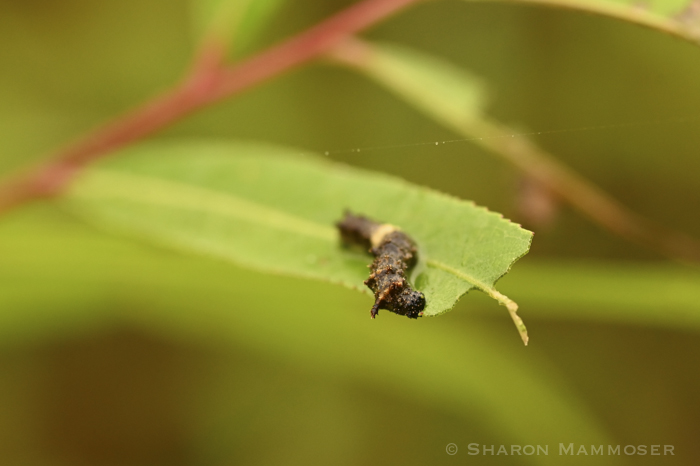Happy October! Fall has arrived!
In North America there are two large orange and black butterflies and one of them gets all of the attention, so much so, that most people don’t even know about the second one. Of course you’ve heard of the Monarch butterfly, with its epic migration to Mexico and its plight of needing the plant Milkweed to survive. But have you heard of the Viceroy? The Viceroy, Limenitis archippus, is the smaller of the two, and the less famous by a lot. It is also the answer to last week’s puzzler.


For anyone wanting to recognize one of these butterflies from the other, there are two main differences. The first is size; Monarchs are bigger. The Monarch butterfly is 3 1/8 -4 7/8 inches long whereas the Viceroy Butterfly is 2 5/8- 3 5/16 long. The second difference is that on the hind wings of the Viceroy, there is a black line that extends across the middle of the whole wing, like a big smile. Notice it on the top photo. The Monarch does not have this line. There are also some other, more subtle differences in the wing-edge patterns, but those are not as easy to pick out.
The Viceroy is a mimic of the Monarch. Monarch caterpillars feed on the leaves of Milkweed and in doing so, accumulate some of the toxic liquid that causes them to be distasteful to birds. The bright orange and black colors are like a giant billboard, telling the birds with clarity that “I taste bad! Don’t eat me!” Viceroys do not eat Milkweed leaves, (they eat the leaves of various species of willows) but are still avoided by birds because of their similar look to the Monarch.
Viceroy caterpillars feed on Willow and they are noteable for being the only horned caterpillar resembling bird droppings.

Ready for another puzzler? Since we’re talking about orange and black butterflies, let’s focus on another– the Monarch. But is it a male or a female? Check it out!

